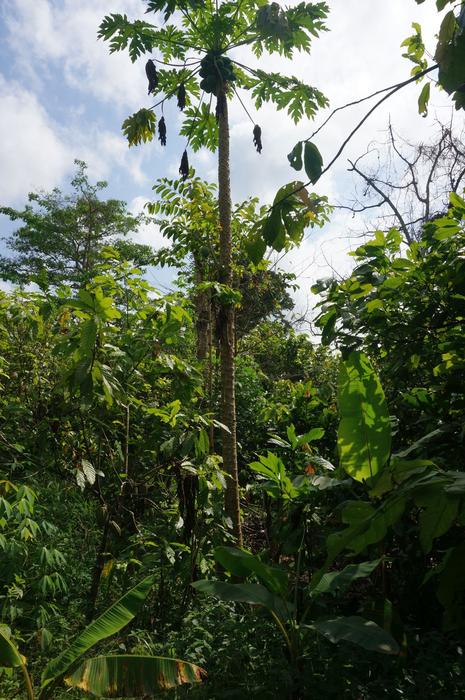Lawmakers hold joint hearing about energy crisis, pushing to roll back climate policies – WBFF

Report on Regional Energy Grid Stability and Sustainable Development Goals
Executive Summary
A multi-state hearing involving lawmakers from Maryland, Pennsylvania, Virginia, and New Jersey addressed growing concerns over energy grid stability. The discussion highlighted a critical tension between advancing Sustainable Development Goal 13 (Climate Action) through green energy initiatives and ensuring the achievement of SDG 7 (Affordable and Clean Energy). Key issues included rising energy costs, potential supply deficits, and the challenges of transitioning from traditional power sources to renewables without compromising grid reliability, which is foundational to SDG 11 (Sustainable Cities and Communities) and SDG 8 (Decent Work and Economic Growth).
Challenges to SDG 7: Affordable and Clean Energy
Lawmakers and officials identified several immediate threats to the provision of affordable, reliable, and sustainable energy for all.
- Affordability: Concerns were raised about a “crushing energy crisis,” with rising prices negatively impacting families and small businesses, undermining the affordability aspect of SDG 7.
- Reliability and Resilience: The potential for future brownouts and blackouts was a significant concern. PJM, the regional grid operator, warned that without a “course correction,” the region could face a deficit in resource adequacy for the first time in the coming years.
- Supply and Demand Imbalance: A growing gap between energy supply and demand was noted, driven by:
- The retirement of traditional power plants.
- Increased energy consumption from industries, electric vehicles, and large data centers.
- The fact that many new projects are solar, which does not consistently produce the same energy output as the retiring plants.
- Energy Dependency: The report noted that Maryland currently imports approximately 40% of its energy, highlighting regional interdependencies and vulnerabilities in achieving energy security.
The Energy Transition Dilemma: Balancing SDG 7 and SDG 13
The hearing underscored the complexities of managing the transition to a low-carbon energy system while maintaining grid stability. The push for climate action (SDG 13) has led to policies that some lawmakers argue are compromising energy security.
- Policy Impact on Energy Mix: Policies such as the Regional Greenhouse Gas Initiative (RGGI) were cited by critics as contributing to the current energy challenges by accelerating the closure of fossil-fuel plants.
- Renewable Integration Challenges: While new energy projects are being developed, they are predominantly solar. This creates a challenge for grid operators in replacing the consistent, dispatchable power lost from retired plants, directly impacting the reliability component of SDG 7.
- Governance and Political Division: The debate exposed a political divide over the pace and methodology of the green energy transition. Republicans voiced a desire for Maryland to leave RGGI, arguing it functions as a tax on producers and ratepayers. Conversely, the Maryland Governor’s Office defended RGGI as a tool that supports multiple SDGs by reducing pollution (SDG 13), saving consumers money (SDG 7), and creating jobs (SDG 8).
Path Forward: Aligning Policy with Sustainable Development
Discussions during the hearing pointed toward several strategies aimed at creating a more resilient and sustainable energy future that balances economic, social, and environmental objectives.
- Promoting Investment in Energy Infrastructure (SDG 9): A need was identified to create a more favorable environment for investment in energy production, including data centers, to bolster local supply and support economic growth (SDG 8).
- Adopting a Pragmatic Energy Mix: There was an acknowledgment of the need for a “realistic” approach to the energy transition. This includes considering natural gas as a transitional fuel that is cleaner than coal, alongside wind and solar, to ensure a continuous and reliable power supply.
- Maintaining Existing Clean Energy Sources: The Governor’s statement highlighted RGGI’s role in supporting existing clean energy sources like nuclear power, which is crucial for maintaining a stable, low-carbon energy base.
- Bipartisan Collaboration: Lawmakers expressed a willingness to seek bipartisan solutions focused on increasing the overall energy supply, whether from renewable or other sources, to ensure the grid can support sustainable communities (SDG 11) today and in the future.
Analysis of Sustainable Development Goals in the Article
1. Which SDGs are addressed or connected to the issues highlighted in the article?
-
SDG 7: Affordable and Clean Energy
- The entire article revolves around energy issues, which is the core of SDG 7. It discusses the affordability of energy, with lawmakers citing a “crushing energy crisis” and rising prices. It also addresses the reliability of energy supply, highlighting “threats of future brownouts and blackouts” and concerns about a “deficit in resource adequacy.” The transition to clean energy is a central theme, with discussions about the “green energy push,” solar projects, and the retirement of traditional power plants.
-
SDG 9: Industry, Innovation and Infrastructure
- The article directly addresses the state of critical infrastructure, specifically the energy grid. The hearing held by lawmakers was to press officials on the “state of the grid.” The reliability and resilience of this infrastructure are questioned, with an energy official warning that without “course correction,” there could be a “deficit in resource adequacy.” This infrastructure is vital for supporting industries like the “large load of data centers” mentioned in the text.
-
SDG 13: Climate Action
- Climate action policies are presented as a major factor in the current energy situation. The article details a debate over policies like the “Regional Greenhouse Gas Initiative (RGGI) and other climate policies.” One side argues these policies contribute to the energy crisis, while the other side defends them, stating RGGI has a “proven track record of… reducing pollution” and has helped “cut carbon pollution from power plants in half.” This highlights the integration of climate change measures into regional policy and planning.
2. What specific targets under those SDGs can be identified based on the article’s content?
-
Target 7.1: By 2030, ensure universal access to affordable, reliable and modern energy services.
- The article’s focus on “rising energy prices” and the “crushing energy crisis” directly relates to the affordability aspect of this target. The concerns about the grid’s stability, including potential “brownouts and blackouts” and a future “deficit in resource adequacy,” speak to the challenge of ensuring reliable energy services.
-
Target 7.2: By 2030, increase substantially the share of renewable energy in the global energy mix.
- This target is reflected in the discussion of the “green energy push.” The article notes that “many new projects that are set to be constructed, are largely solar projects” and that “38,000 megawatts of green and green energy” have been approved. This shows a clear effort to increase the share of renewable energy, even as challenges in replacing traditional generation are acknowledged.
-
Target 9.1: Develop quality, reliable, sustainable and resilient infrastructure… to support economic development and human well-being.
- The hearing on the “state of the grid” is a direct examination of the quality and reliability of energy infrastructure. The warning from the PJM representative about the grid’s future stability underscores the need to develop resilient infrastructure to avoid supply deficits and support economic actors like data centers and small businesses.
-
Target 13.2: Integrate climate change measures into national policies, strategies and planning.
- The debate surrounding the “Regional Greenhouse Gas Initiative (RGGI)” is a clear example of this target in action at a regional level. The article shows how this climate policy is integrated into the energy and economic strategies of Maryland and other states, and how it is a subject of political contention regarding its effects on energy supply and cost.
3. Are there any indicators mentioned or implied in the article that can be used to measure progress towards the identified targets?
-
Indicators for Energy Affordability and Reliability (Target 7.1)
- Energy Prices: The article explicitly mentions “rising energy prices” and a “crushing energy crisis,” which serve as direct indicators of a lack of affordability.
- Grid Stability: The “threats of future brownouts and blackouts” and the prediction of a potential “deficit in resource adequacy” are qualitative indicators of declining grid reliability.
- Energy Import Dependence: The fact that “Maryland is importing about 40 percent of its energy from other states” is a quantifiable indicator of its own generation capacity and supply situation.
-
Indicators for Renewable Energy Share (Target 7.2)
- New Renewable Capacity: The approval of “38,000 megawatts of green and green energy” in the project queue is a specific indicator of planned increases in renewable energy capacity.
- Type of New Projects: The statement that “many new projects that are set to be constructed, are largely solar projects” indicates the direction of new investment in the energy mix.
-
Indicators for Climate Policy and Emissions (Target 13.2)
- Policy Implementation: The existence of and political debate around the “Regional Greenhouse Gas Initiative (RGGI)” serves as an indicator of climate policy integration.
- Carbon Emission Reductions: The claim that partner states have “cut carbon pollution from power plants in half” is a direct, quantifiable indicator of the impact of such policies on greenhouse gas emissions.
4. Summary Table of SDGs, Targets, and Indicators
| SDGs | Targets | Indicators Identified in the Article |
|---|---|---|
| SDG 7: Affordable and Clean Energy | 7.1: Ensure universal access to affordable, reliable and modern energy services. |
|
| 7.2: Increase substantially the share of renewable energy in the global energy mix. |
|
|
| SDG 9: Industry, Innovation and Infrastructure | 9.1: Develop quality, reliable, sustainable and resilient infrastructure. |
|
| SDG 13: Climate Action | 13.2: Integrate climate change measures into national policies, strategies and planning. |
|
Source: foxbaltimore.com
What is Your Reaction?
 Like
0
Like
0
 Dislike
0
Dislike
0
 Love
0
Love
0
 Funny
0
Funny
0
 Angry
0
Angry
0
 Sad
0
Sad
0
 Wow
0
Wow
0
















































:focal(1500,1000)/https://media.globalcitizen.org/a6/9a/a69a4720-d8a1-4715-b596-18738d03c05c/rotary_polio_hero_image.jpg?#)







/countries/sri-lanka/photo-credit---dmc-sri-lanka.tmb-1200v.jpg?sfvrsn=dc298bcc_1#)


















